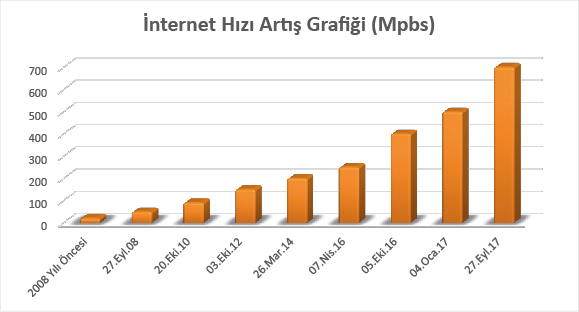Research Article
Issue Editorial Board






 Web
Web

Aim & Scope
The Usak University Journal of Educational Research is an open access, free of charge, double-blind peer-reviewed, international scientific journal published online in the field of Educational Sciences and Teacher Education. The journal, which has been published three times a year (April, August, and December) since 2015, publishes articles written in Turkish or English. Adopting a scientific research-oriented approach, the journal aims to produce original scientific ideas and thoughts, identify problems, and develop solution suggestions in the fields of Educational Sciences and Teacher Education.
The Usak University Journal of Educational Research takes into consideration original articles that investigate problems and offer solutions in the field of educational sciences at the preschool, primary school, secondary school, high school, university, graduate, and adult education levels. The journal's focus areas are:
Teacher Education; Computer and Instructional Technologies Education; Open and Distance Learning Curriculum and Instruction; Educational Administration, Supervision, Planning and Economics; Measurement and Evaluation in Education; Biology Education; Science Education; Physics Education; Chemistry Education; Mathematics Education; Special Education and Disabled Education; Special Talented Education; Psychological Counseling and Guidance; Early Childhood Education; Primary education; Adult Education, Classroom Education; Geography Education; Philosophy Education; Social Studies Education; History Education; Turkish Education; Higher Education Studies; Other Studies on Education
Author Guidelines
Manuscripts submitted to the Usak University Journal of Educational Research should adhere to the journal's writing guidelines detailed below and the Manuscript Writing Template. Prior to review, all manuscripts receive preliminary evaluation for both their format and content. Manuscripts that do not comply with the article writing template are not considered for review.
Files for Article Writing Template:
Manuscript Writing Template for English Article DOWNLOAD
Author Declaration Form for English Article DOWNLOAD
General Rules
- The submitted work should not have been previously published or submitted to another journal for evaluation.
- The manuscript submitted to the journal should adhere to the journal's "Manuscript Writing Template" and include the "Author Declaration Form," "Plagiarism Report," and "Ethics Committee Approval Document" for studies requiring such approval.
- The plagiarism result report (similarity report) for the uploaded article should be below 20% excluding references. Any articles with a high similarity rate will be returned to the author after editorial review.
- The manuscript should be written in "Calibri (Body)" font, 10 pt, justified, single-spaced without spaces, with page margins of 2.5 cm and not exceeding 30 pages.
- The manuscript should contain a Turkish and an English title, as well as Turkish and English abstracts that are between 150-200 words. Additionally, it should provide a maximum of five keywords, the main text, author statements, references, and appendices, if applicable.
- The author is responsible for proofreading their manuscript's language. Manuscripts that do not meet language validity requirements will not be published until language validity is ensured.
- The manuscript should include information on the Ethics Committee Permission Statement, Conflict of Interest Statement, Researcher Contribution Statement, Support, and Acknowledgment Statement (if applicable) at the end.
- Use the APA 6 reference style for the bibliography, some examples of which are provided below. You can find further guidance on complying with journal writing rules at this link.
- Submissions should comply with the following journal writing rules:
Manuscript Writing Rules for Article Sections
Keywords should contain a minimum of five words that reflect the study's integrity and should be written consistently under the "Keywords" headings. They should be in 9-point font, single-spaced, left-justified, and the first letter of each keyword should be capitalized.
Introduction (12 point, Left Justified, Bold font)
First Level Title
2nd Level Title
The second-level heading should be justified to the left side, bold, 10 pt, with 6 pt. spacing before and after. The first letter of every word should be capitalized, and the rest should be in lowercase letter.
Method
In this section, it should be stated who the study group consists of and how it was selected, and if possible, demographic information about the participants should be presented in a table. Information about the characteristics, development, validity, and reliability of the data collection tool(s) used in the research should be given. The statistical techniques used in the analysis of the data, the purpose of their use, the significance levels used, and the stages of content analysis and thematic analysis should be detailed.
Information about the ethics committee's approval of the research (name of the committee, date, and number) should be stated on the last page of the article and should also be explained in the method section.
Findings
Tables
The table should not exceed the page dimensions. The title and content of the table should be in Calibri body font, 10 pt, with the first word in upper case and the rest in lower case. The font can be reduced if needed. For the text within the table, it should be in 10-point size and should be set without spaces before and after the lines. Initial letters should be capitalized in table titles. Horizontal lines should be used in tables; abbreviations and footnote explanations should be given below the table.
Table 1. Distribution of Participants' Education Level (Table title left justified, italicized and capitalized, 6 pt. spacing before and after)| Education | n | % |
Anatolian High School | 79 | 86.8 |
Other high schoolsa | 12 | 13.2 |
aOther high schools: Science High School, Imam Hatip High School, Vocational High School
When reporting results based on statistical techniques in the findings, abbreviations related to statistical test techniques should be italicized in the text and in the table (e.g., t, F, sd, r, p) and a period (such as 2.56; .05; .01) should be used instead of a comma when reporting decimal numerical results.
Figures

Figure 1. Title of the Image (Figure captions are centered, italicized and capitalized, 6 pt. spacing before and after)
Discussion, Conclusion and Recommendations
Acknowledgements
Ethics Committee Permission Statement
Conflict of Interest Statement
Authors Contribution Statement
Statement of Support and Acknowledgment
References
In-text Citation:
Citations in the Reference Section:
Grady, J. S., Her, M., Moreno, G., Perez, C., & Yelinek, J. (2019). Emotions in storybooks: A comparison of storybooks that represent ethnic and racial groups in the United States. Psychology of Popular Media Culture, 8(3), 207–217. https://doi.org/10.1037/ppm0000185
Creswell, J. W. (2012). Educational research: Planning, conducting, and evaluating quantitative and qualitative research (4th ed.). Pearson.
Creswell, J. W., & Poth, C. N. (2016). Qualitative inquiry and research design: Choosing among five approaches. Sage publications.
Jackson, L. M. (2019). The psychology of prejudice: From attitudes to social action (2nd ed.). American Psychological Association.
*Identify the author, year of publication, title and publisher of the book. Use the same format for both printed books and e-books. Enclose edition information in parentheses after the title, without italics. If the book contains a DOI, include the DOI after the publisher's name in the reference.
For Edited Book:
Aron, L., Botella, M., & Lubart, T. (2019). Culinary arts: Talent and their development. In R. F. Subotnik, P. Olszewski-Kubilius, & F. C. Worrell (Eds.), The psychology of high performance: Developing human potential into domain-specific talent (pp. 345-359). American Psychological Association. https://doi.org/10.1037/0000120-016
Goldsmith, L. T., & Seago, N. (2011). Using classroom artifacts to focus teachers’ noticing: Affordances and opportunities. In M. G. Sherin, V. R. Jacobs, & R. A. Philipp (Eds.), Mathematics teacher noticing: Seeing through teachers’ eyes (pp. 169-187). New York: Routledge.
*If the chapter has a DOI, include the chapter DOI after the publisher name in the reference. If a chapter without a DOI has a fixed URL to resolve for readers, include it in the reference.
For Unpublished Master’s Thesis;
For unpublished master's thesis and doctoral dissertations, the phrases (Unpublished master's thesis/Unpublished master's thesis) and (Unpublished doctoral dissertation/ Unpublished doctoral dissertation) should appear in parentheses after the title of the thesis and the name and location of the university where the thesis was conducted should be indicated.
Healey, D. (2005). Attention deficit/hyperactivity disorder and creativity: An investigation into their relationship. (Unpublished doctoral dissertation). University of Canterbury, New Zealand.
Topuz, F. (2017). The effect of using dynamic geometry software GeoGebra for teaching of "Circle and Disc" on the 7th grade students' achievement, attitudes towards geometry and retention level in learning. (Unpublished master's thesis). Usak University, Türkiye.
For paper presented at the Conference or Symposium:
For papers presented at conferences, symposiums, and congresses, it is necessary to provide the date, title of the paper presented, presentation type (abstract/poster), scientific meeting name, city, and country where it was held. If the abstracts contain a web link, they should be included.
Cacioppo, S. (2019, April 25–28). Evolutionary theory of social connections: Past, present, and future. Paper presented at the Ninety-ninth annual convention of the Western Psychological Association, Pasadena, CA, United States. Retrieved from https://westernpsych.org/wp-content/uploads/2019/04/WPA-Program-2019-Final-2.pdf
Birgin, O., & Demirören, K. (2017, September 14-16). Investigating the performance of seventh and eighth grade middle school students on algebraic expressions. Paper presented at the I. International Congress on Educational Research and Teacher Education, Usak University, Usak.
For Conference Proceedings Book:
Bedenel, A.-L., Jourdan, L., & Biernacki, C. (2019). Probability estimation by an adapted genetic algorithm in web insurance. In R. Battiti, M. Brunato, I. Kotsireas, & P. Pardalos (Eds.), Lecture notes in computer science: Vol. 11353. Learning and intelligent optimization (pp. 225–240). Springer. https://doi.org/10.1007/978-3-030-05348-2_21
For Institutional Reports and Documents
National Council of Teachers of Mathematics (NCTM) (2000). Principles and standards for school mathematics. Reston, VA: NCTM.
Ministry of National Education (MoNE). (2018). Turkish primary and secondary mathematics curriculum (1-8th grades). Ankara: Republic of the Turkish Ministry of National Education
For Internet Resources:
National Institute of Mental Health (2018, July 15). Anxiety disorders. U.S. Department of Health and Human Services, National Institutes of Health. https://www.nimh.nih.gov/health/topics/anxiety-disorders/index.shtml
Bologna, C. (2019, October 31). Why some people with anxiety love watching horror movies. HuffPost. https://www.huffpost.com/entry/anxiety-love-watching-horror-movies_l_5d277587e4b02a5a5d57b59e
Horovitz, B. (2021, October 19). Are you ready to move your aging parent into your home? AARP. https://www.aarp.org/caregiving/home-care/info-2021/caregiving-questions.html
*If the journal article does not have volume, issue and/or page numbers (for example, because it is from an online journal), remove the missing items from the reference (as in the Schulman example).
Extended Abstract (Only for articles written in Turkish)
It is not mandatory to submit a Turkish Extended Abstract for studies written in English. In studies written in Turkish, an extended English abstract of 750-1000 words should be submitted. The extended summary should start on a new page and be given under subheadings, including the "Introduction, Method, Findings, Discussion" sections.Ethical Principles and Publication Policy
The Usak University Journal of Educational Research is an open-access, free of charge, double-blinded peer-reviewed, and international academic journal published online.
The Usak University Journal of Educational Research accepts scientific, original research, and compilation studies in the field of educational sciences and teacher education, from pre-school to higher education, including postgraduate and adult education. The research areas the journal focuses on are: Teacher Education; Computer and Instructional Technologies Education; Open and Distance Education; Curriculum and Instruction; Educational Management, Inspection, Planning and Economics; Measurement and Evaluation in Education; Biology Education; Science Education; Physics Education; Chemistry Education; Mathematics Education; Special Education and Disability Education; Special Talented Education; Guidance and psychological counseling; Pre-school education; Primary education; Adult Education; Classroom Education; Geography Education; Philosophy Education; Social Studies Education; History Education; Turkish Education; Higher Education Studies; Other Studies in the Field of Education
The journal is published three times a year (April, August, and December) and publishes articles written in Turkish or English. Language control (proofreading) of articles submitted in English is the author's responsibility. Articles that are linguistically inadequate are not published until language validity is ensured.
The journal accepts original research and review studies that have not been previously published or sent to another journal for evaluation.
The journal editors, reviewers, and authors adopt the principles, standards, and recommendations regarding publication ethics determined by the ICMJE (International Committee of Medical Journal Editors) and the International Committee on Publication Ethics (COPE).
Manuscripts sent to the journal are first reviewed in terms of journal writing rules, scope, and form. Manuscripts that do not fall within the scope of the journal, do not comply with the spelling rules, and are not prepared in accordance with the template are not taken into the evaluation process.
It is mandatory to submit information about the Ethics Committee Permission Statement, Informed Consent Statement, Conflict of Interest Statement, Researcher Contribution Statement, and Support and Acknowledgment Statement (if any) regarding the studies submitted to the journal. If the manuscript was produced from a thesis or presented at a congress or symposium, it should be stated in the study.
"Ethics Committee Permission" is required for all kinds of research conducted with qualitative or quantitative approaches that require collecting data from participants using survey, interview, focus group study, observation, experiment, and interview techniques. It is stated in the study whether ethics committee approval and/or legal or special permission are required.
The authors are obliged to sign the Author Declaration Form for the article. Copyright and publishing rights of the author(s) are reserved. The authors declare that if the article is accepted for publication in the journal, it will be licensed under the Creative Commons Attribution 4.0 International (CC BY 4.0) license.
Authors are required to upload similarity reports for each study submitted to the journal using plagiarism scanning software (Turnitin, iThenticate, etc.). Studies with a similarity rate of less than 20%, excluding bibliography, are examined. Candidate articles with a high similarity rate are returned to the author after editorial control.
The journal is a free journal and does not charge authors any fees for any reason during the article submission phase, evaluation process and publication phase.
The journal management has the right to publish or not publish the submitted articles and to make corrections to the articles when deemed necessary. The legal responsibility of an article published in the journal belongs to its author, and the author is deemed to have accepted this issue by submitting an article to the journal.
The journal follows a double-anonymous peer review policy. During the scientific study review process, the journal takes great care to make sure that authors, editors, and reviewers do not have any conflicts of interest. Manuscripts that are suitable in terms of scope, content, and form are sent by the editors to at least two reviewers who are experts in their fields for scientific evaluation. In the manuscript sent to the journal, all information about the authors (author names and institutions, etc.) is kept confidential (blinded) and sent to the referees. A double-blinded peer-review system is used in the review of studies. The article, which receives two publishable reports as a result of reviewer evaluation, is published in an issue deemed appropriate by the journal management. If one of the reviewer reports is positive and the other is negative, the article is sent to a third reviewer. In this case, it is decided whether the article will be published or not according to the report of the third reviewer.
If a violation of ethical rules is detected in studies submitted to the journal, the study is returned to the author. If it is determined that there is a violation of ethical rules in an article previously published in the journal, necessary actions are taken in the form of correction, retraction, statement of concern, or publication of an information note regarding the study. Every reported act of unethical publishing behavior is investigated, even if discovered years after publication.
Publication Charge Policy
The Usak University Journal of Educational Research is a free-of-charge and open-access journal. No fee is requested from the authors for any reason during the article submission phase, evaluation period, and publication phase.
Plagiarism Policy
Authors are required to upload similarity reports for each study submitted to the journal using plagiarism scanning software (Turnitin, iThenticate, etc.). The similarity rate must be lower than 20%, excluding bibliography. Works without a plagiarism report are not taken into consideration. For studies with a high similarity rate after the editorial board plagiarism check, the responsible author is requested to correct the errors, and the study is returned to the author.
The Usak University Journal of Educational Research has adopted an open-access policy. Open access creates beneficial results for humanity by increasing the global exchange of information. The Usak University Journal of Educational Research also supports the Budapest Open Access Initiative. Detailed information about open-access policies can be found at https://www.budapestopenaccessinitiative.org/read/

Price Policy
Usak University Journal of Educational Research does not charge any fees from authors or institutions under any name within the scope of article submission and processes. EARDE is an open access, free of charge, double-blind peer-reviewed, international scientific journal.
Indexes
Other Indexes
Journal Boards
The owner of the Journal (On behalf of the Dean of Faculty of Education)






 Web
Web
Editor in Chief






 Web
Web
Associate Editors

Section Editors





Editorial Advisory Board







Secreteria

Language Editors
Layout Editor



Articles published in the Usak University Journal of Educational Research are licensed under the Creative Commons Attribution 4.0 International License (CC BY 4.0).










